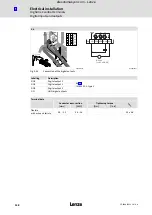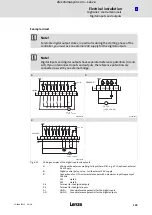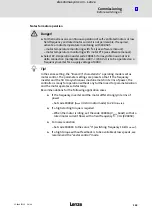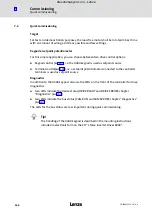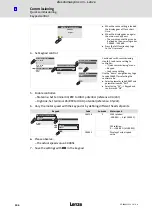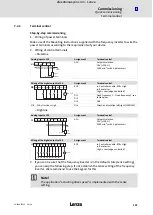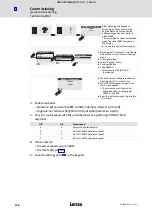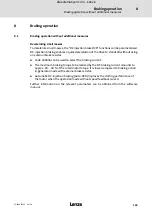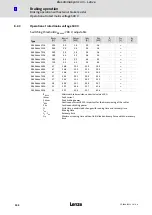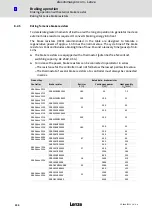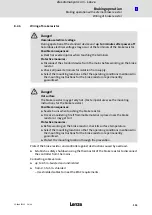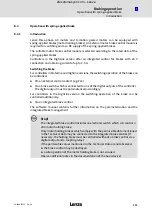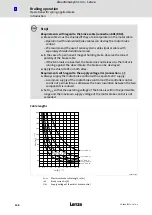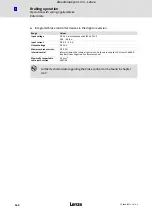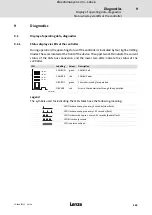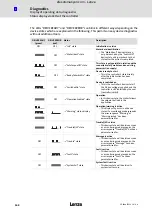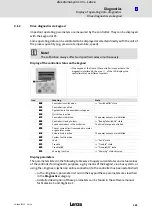
Braking operation
Braking operation with external brake resistor
Operation at rated mains voltage 230 V
l
150
EDS84ASC552 EN 6.0
8.2
Braking operation with external brake resistor
To decelerate greater moments of inertia or with a longer operation in generator mode an
external brake resistor is required. It converts braking energy into heat.
The brake resistor is connected if the DC−bus voltage exceeds the switching threshold. This
prevents the controller from setting pulse inhibit through the "Overvoltage" fault and the
drive from coasting. The external brake resistor serves to control the braking process at any
time.
The brake chopper integrated in the controller connects the external brake resistor.
ƒ
Adapt the switching threshold to the mains voltage (C00173/C00714, see software
manual).
8.2.1
Operation at rated mains voltage 230 V
Switching threshold V
BRmax
: 380 V, adjustable
R
Bmin
[
]
I
BRmax
[A]
P
BRmax
[kW]
I
BRd
[A]
P
Bd
[kW]
t
Z
[s]
t
on
[s]
t
fp
[s]
Type
E84AVxxx2512
180
2.1
0.8
1.6
0.6
−
−
E84AVxxx3712
180
2.1
0.8
1.6
0.6
−
−
E84AVxxx5512
100
3.8
1.4
2.8
1.1
−
−
E84AVxxx7512
100
3.8
1.4
2.8
1.1
−
−
E84AVxxx1122
33
11.5
4.4
8.6
3.3
−
−
E84AVxxx1522
33
11.5
4.4
8.6
3.3
−
−
E84AVxxx2222
33
11.5
4.4
8.6
3.3
−
−
R
Bmin
Minimum brake resistance, nominal value ±10 %
I
BRmax
Peak current
P
BRmax
Peak braking power
I
BRd
Continuous current RMS − important for the dimensioning of the cables
P
Bd
Continuous braking power
t
Z
Cycle time, periodic load change with running time and recovery time
t
on
Running time
t
Z
− t
on
Recovery time
t
fp
Maximum running time without initial load and compliance with the recovery
time
efesotomasyon.com - Lenze



